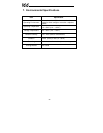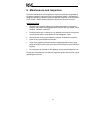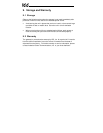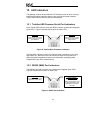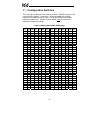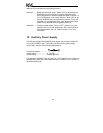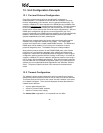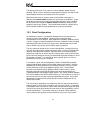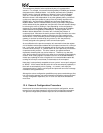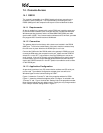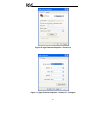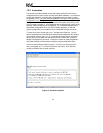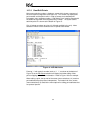
28
This concept may best be further explained by way of a representative
scenario. For example, let’s assume that the gateway’s RS485A port has been
designated to be a Modbus Master. Let’s further assume that the “Modbus
Master” portion of point #5 indicates an “Address” value of 8 and “Register”
value of 14, and that point #5’s “Source Port” selection is set to “RS485A”.
What this means is that independent of any other gateway traffic, point #5 will
continuously attempt to update its internal value by making requests to the
RS485A port. And, because the RS485A port has been designated as a
Modbus Master, then the “Modbus Master” portion of point #5’s configuration
will be referenced by the update task, and point #5’s value will therefore always
be mirroring the value of (holding or input, depending on the configuration)
register #14 of remote Modbus station address #8 connected to the Modbus
subnet attached to the gateway’s RS485A port. Perhaps register #14 of
Modbus station address #8 is a monitor item, indicating the pressure in
compressor tank. Whenever the tank’s pressure changes, therefore, the value
of point #5 will automatically update to reflect the new value read from the
remote device. Once the tank’s pressure reading has been brought into the
gateway, it can then be retrieved by any protocol (or ALL the protocols)
currently assigned to the gateway’s other communication ports.
As a modification to the previous example, let’s assume this time that register
#14 of Modbus remote station address #8 is the speed command of a conveyor
belt. In this case, point #5 of the gateway will be mirroring the current speed
command of the conveyor, in a similar fashion to how it previously mirrored the
compressor tank’s pressure. This time, however, the speed command
represents something that can also be written to. Therefore, any new data
value that is written to point #5 from any other port connection will automatically
cause a “write holding register” transaction to occur on the RS485A Modbus
master port, updating the value of register #14 on remote Modbus station #8,
causing the conveyor to accelerate (or decelerate) to the new speed.
Note that it is also perfectly acceptable to have a point’s “source port” assigned
to “NONE”. All this means that this point will not be autonomously updated (i.e.
that it will not automatically mirror anything.) In a sense, it will simply be
“scratchpad memory” that the various ports and protocols can use to exchange
information among themselves.
Although the various configuration possibilities may seem overwhelming at first,
it is clear that the gateway can perform powerful and flexible routing algorithms.
Through configuration experience, the “in” and “out” data flows will become
more clear.
13.4 General Configuration Procedure
Now that we have had a brief tutorial on port and point configuration, we can
proceed on to how these elements fit into the overall configuration procedure.
The general configuration procedure steps can be summarized as follows:



